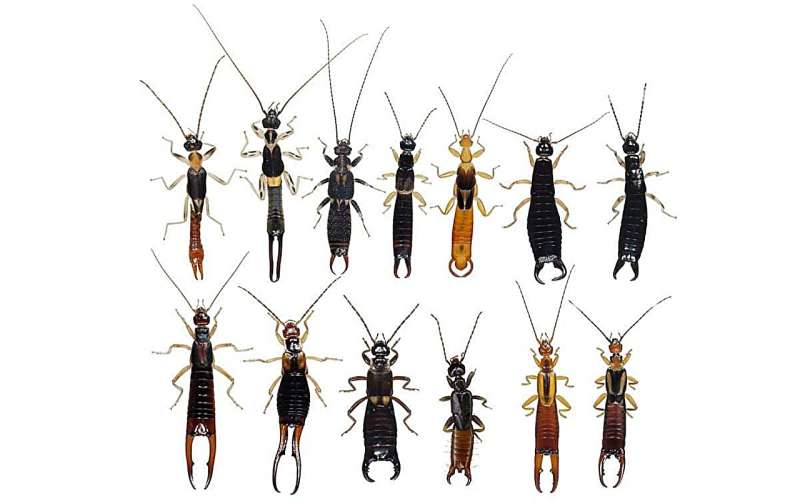This article has been reviewed according to Science X's editorial process and policies. Editors have highlighted the following attributes while ensuring the content's credibility:
fact-checked
trusted source
proofread
Examining the evolutionary history of the formation of forceps and maternal care in earwigs

Researchers from the University of Tsukuba examined the developmental processes and reproduction-related behavior of 8 of the 11 families of Dermaptera (earwigs) in detail and compared with those reported in previous studies. The results confirmed that Dermaptera is a polyneopteran order, and features such as caudal forceps and elaborate maternal care for eggs and young larvae emerged in parallel within the order during evolution.
Dermaptera (earwigs) are an order of common insects often found under stones that are characterized by a pair of forcep-like pincers on their dark abdominal ends. Systematically, they belong to Polyneoptera, a classification that is important for understanding the evolution of the insects. However, there is no consensus among researchers on assigning them to Polyneoptera, their position within the group, or the relationships between families within this order.
Recently, large-scale molecular phylogenetic analyses have begun to elucidate these phylogenetic aspects. However, the understanding of their evolution will be extremely superficial in the absence of biological information on development and reproduction.
Therefore, researchers examined the developmental and reproductive biology of almost all Dermaptera families (8 out of 11) and compared them from various perspectives. The results corroborated the systematic membership of Dermaptera to Polyneoptera and strongly supported the phylogeny within the order, which was inferred from the latest molecular phylogenetic analyses but was significantly different from the conventional understanding.
These findings indicated that the "caudal forceps," which are a major characteristic of Dermaptera, and the "elaborate maternal care for eggs and young larvae," which are an important behavioral trait in this order, have emerged in parallel.
The study is published in the journal Arthropod Systematics & Phylogeny.
Future studies will examine more basal families as well as families whose monophyly is dubious, including more genera into the analysis, to advance the phylogenetic understanding of Dermaptera and, ultimately of Polyneoptera and Insecta.
More information: Shota Shimizu et al, Development and reproductive biology of Dermaptera: a comparative study of thirteen species from eight families, Arthropod Systematics & Phylogeny (2024). DOI: 10.3897/asp.82.e96452
Provided by University of Tsukuba




















